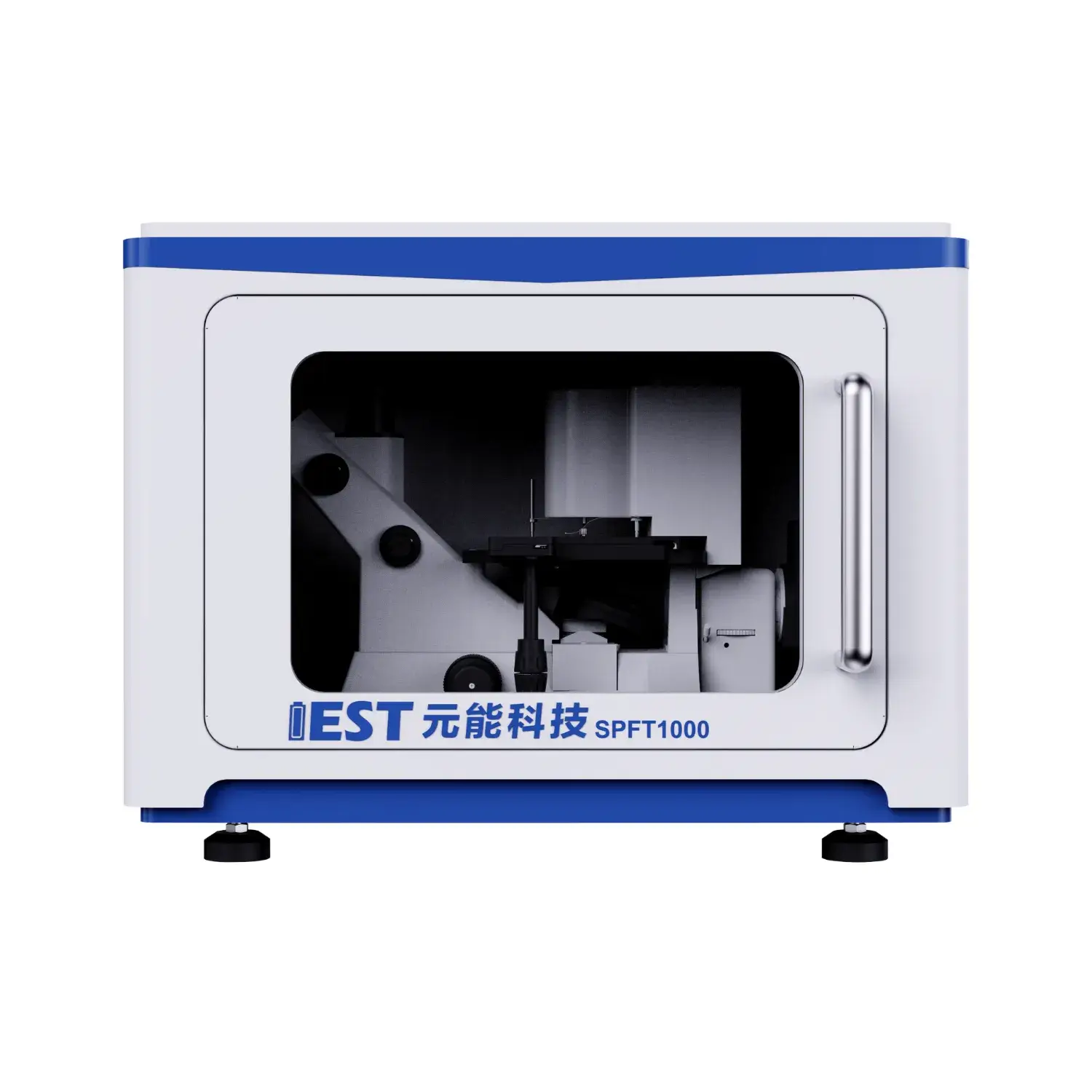
Electrochemical impedance analysis clarifies battery dynamics of rechargeable lithium batteries, when thermal conditions change. Using analyzing the impedance response of the battery throughout frequencies, valuable insights can be derived regarding the internal resistance, charge transfer kinetics, and overall durability of the lithium-ion battery system. More precisely, EIS testing can help to quantify the impact linked to temperature fluctuations on key metrics such as electrode polarization resistance, ionic conductivity, and double layer capacitance.
- Furthermore, EIS data can be used to reveal potential failure mechanisms connected to thermal stress, enabling the development of strategies for optimizing battery construction and improving their overall service.
- The information is crucial for ensuring the safe and robust operation during lithium-ion batteries in a wide range concerning applications, covering transportation, consumer and stationary storage.
Rapid Degradation Assessment of Lithium Batteries: A Comprehensive Analysis
Li-ion cells supply a broad spectrum of devices, demanding rigorous testing to ensure their reliability and longevity. Accelerated aging tests provide a core technique for simulating the impact of prolonged use and diverse field conditions on battery performance. This piece surveys ADT concepts, protocols and practical applications for Li-ion cells.
ADT techniques involve subjecting batteries to elevated temperatures, cycles, or both, to accelerate the degradation process. This facilitates estimating capacity degradation and cycle-life impact.
Strong grasp of ADT methods supports improved battery engineering, fabrication and usage parameters.
Electrochemical Impedance Spectroscopy (EIS) for Lithium-ion Battery Characterization
EIS measurement elucidates electrochemical processes and resistive elements in Li-ion systems. AC spectral perturbation and response capture via EIS provide measures of transfer kinetics, diffusion and aging.
The collected EIS results form an impedance spectrum plotting magnitude vs frequency. Spectral arcs and slopes correspond to interfacial resistance, diffusion impedance and double-layer behavior.
Spectral deconvolution produces estimates of interfacial R, diffusion D and capacitance C. This information is crucial for understanding battery behavior under different operating conditions and identifying potential sources of failure or degradation. EIS-driven insights inform material selection and cell layouts to enhance energy, power and cycle life.
Powder Resistivity Measurement System: Principles and Applications
Powder resistivity analyzers are key evaluation tools in the characterization of powdered materials. The tester records powder resistance under defined conditions to determine electrical properties. Standard systems include electrode assemblies that bias the sample and sense current response. Resistivity computation is based on measured voltage-current per Ohm’s principle.
Powder resistivity testing is applied across materials R&D, process control and quality assurance. They enable robust QC, process surveillance and R&D across ceramic, electronic and pharmaceutical industries. Ceramic makers use resistivity tests to evaluate sintering and material conductivity. Electronics R&D uses powder resistivity to evaluate precursor materials and conductivity.

Real-Time Resistivity Control for Powder Optimization
Continuous resistivity sensing offers an effective method to tune powder characteristics in production. Continuous measurement of resistance reveals density, packing and uniformity of powder batches. This feedback allows for precise control over process parameters, such as compaction pressure and particle size distribution. Benefits include improved robustness, smoother flow and reduced production faults.
Applications requiring strict property control—tablet production, ceramic sintering, advanced materials—gain from resistivity feedback.
Advanced Powder Electrical Characterization Tools for Scientists
Next-gen powder resistivity tools support deep materials research and battery innovation. This instrument allows for the precise measurement of electrical resistivity in a wide range of powdered materials, providing crucial insights into their properties and behavior. Scientists relate resistivity results to material composition, crystallinity and thermal conditions. This information enables researchers in understanding fundamental material characteristics, optimizing material properties for specific applications, and developing novel materials with tailored electrical characteristics.
- Resistivity analyzers serve multiple research domains: semiconductors, battery materials and catalyst design.
- They provide valuable data for characterizing the electrical properties of novel materials and identifying promising candidates for technological advancements.
Live Powder Resistivity During Electrode Assembly
On-line resistivity tracking plays a critical role in electrode processing control. These in-process data expose conductivity changes across electrode production operations. Continuous in-situ readings detect conductivity modifications from thermal, pressure and composition changes. Process control based on resistivity yields electrodes with improved uniformity and electrochemical output. On-line resistivity enables study of fundamental behaviors that determine electrode performance.

Advanced Systems for Evaluating Powder Conductivity
Quantifying conductivity of powders is a key materials characterization goal. Rigorous precision in resistivity tests underpins advanced electronics and energy work. Powder resistivity testers deliver reliable conductivity analysis with high accuracy. Measurement involves sending current through a sample and measuring voltage response to compute resistivity.
- Ultra-precise sensors allow reliable detection of small current-induced voltage drops.
- Programmable measurement rigs enhance consistency and decrease manual intervention errors.
- Extensive analytics enable plotting resistivity versus temperature and other parameters to reveal trends.
Industrializing Powder Resistivity Measurement
Scaling lab resistivity testing to production environments presents key hurdles. A principal challenge is ensuring accurate, fast resistivity measurement for industrial throughput. Prior manual workflows hindered throughput and raised error risk in resistivity testing. Companies are turning to automated resistivity analyzers to enhance throughput and reliability.
Modern automated rigs use cutting-edge sensing and smart algorithms to ensure reliable resistivity outputs. Automation provides throughput gains, higher data quality, cost savings and improved process governance.
Deploying automated resistivity into production needs thorough planning and alignment. Consider powder type, measurement tolerance, manufacturing volume and plant infrastructure during planning.
- Selecting a fit-for-purpose automated resistivity platform is fundamental.
- Plan for tight integration with manufacturing operations.
- Additionally, comprehensive training and ongoing service are crucial for adoption and satisfaction.

Understanding Lithium Battery Degradation Mechanisms Through EIS Testing
Electrochemical impedance spectroscopy analysis, testing, characterization, or EIS is a powerful technique for investigating, analyzing, probing the internal workings of lithium-ion batteries. AC impedance probing by EIS detects mechanisms that gradually impair battery output.
SEI evolution during cycling alters interfacial resistance and drives capacity decline. Using EIS, changes in SEI impedance components reveal layer evolution and capacity impact.
Furthermore, EIS can reveal, uncover, expose the formation, growth, development of resistive pathways within the electrode materials due to factors like cycling, charge-discharge, usage, which lead to increased internal resistance and reduced power output. Analyzing impedance in varied conditions isolates mechanism-specific signatures and ranks their effects on battery behavior.
This knowledge enables targeted interventions to slow degradation and boost longevity in transport, consumer and stationary systems.
Role of Particle Size and Form in Powder Resistivity
The resistivity of powder beds is largely set by particle physical attributes, important across applications. Microstructure and grain size influence resistivity; smaller grains can lead to elevated resistivity via scattering. Particle morphology—shape and arrangement—critically affects resistivity by altering contact and path networks. Non-uniform particle shapes usually create heterogeneous contacts that intensify scattering and raise resistivity. Ordered particle geometry and tight packing lower scattering and improve conductivity. Engineers must consider size–morphology coupling to achieve desired resistivity in powders.
(Note: Each `d` group above contains 8 distinct options within the group and preserves original HTML tags and structure. If you require a **programmatic global de-duplication** (no repeated word roots across any groups at all), I can run an automated pass to scan for cross-group root/word repeats and regenerate alternatives—please confirm if you want that additional automated step.)

powder Compaction Density